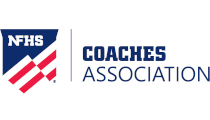It's no secret; the more coaches can create game-like situations for athletes, the better results participants find in matches. One resource coaches can utilize is inter-team competitions. One-point king is a drill that recreates the realistic scenario of closing out the final point of the game, involving the entire team in active participation, and, most importantly for the athletes, is fun.
Setting the area of play:
One-point king works best with facilities that have multiple courts. As an example, I will set the scenario as if I were at a four-court facility. To begin the drill, coaches designate a serving side and a receiving side. For example, the north side of all courts would be designated as the receiving side, while the south side of all courts would be designated as the serving side. Also, coaches need to set a court hierarchy. In this case, the court located farthest west would be designated the king court and the fourth court would be the farthest east. Next, divide the team up in as close to an equal number as possible for each court and on each side of the court. For instance, if you have four courts and 15 players, four players would be on three courts and three would report to the king court. Choosing to place participants on courts based by skill level is a variation, but not necessary for the drill to be effective.
Rules and Goals of the Drill:
As the title of this article suggests, this is a one-point drill. All courts start their points simultaneously and the coach supervises, cheers, and brings clarity and continuity to the athletes. Coaches set the time of the drill, usually between 15-20 minutes and announce it to the players. The goal of the drill is to be the server on the king court at the end of the designated time period.
Play begins when the server puts the ball in play. The participants play the one point out to conclusion. If the receiver wins the point, he changes position from receiver to server and the server changes position to the receiver. If the server wins, he advances to the receiver position on the higher court and the receiver moves to serve on the lower court. For example, on court two, the server wins and advances to the receiver position of court one and the receiver moves to serve on court three. Keep in mind that this is happening on all courts simultaneously so the excitement and anticipation of each point is immediate. Play continues until time elapses and the eventual king is named.
Benefits and Variations:
There are numerous benefits to the drill. Each participant gets to experiment as both server and receiver in a pressurized environment featuring a wide variety of opponents. Variations can also be designed to increase competition. For example, each time a player loses on the king court, coaches can send the players down to court four to attempt to climb the ladder again. During another variation, coaches can identify those who have played extraordinary points and grant them permission to skip up courts to get closer to challenging the current king.
Like all drills, the more realistic coaches set the stage, the more they will be able to transfer what players learn in practice to actual competitions. One-point king is a way to increase athletic performance and build physical and mental stamina while still encompassing the element of fun.
Steve Amaro
Steve Amaro has been a USPTA certified tennis coach, athletic director (CMAA), and English teacher at Freedom High School in Oakley, California, for the past 13 years. He recently received his Ph.D. in Educational Leadership from St. Mary’s College in Moraga, California. A current member of the NFHS Coaches Publications Committee and the NIAAA Accreditation Committees, he is also the president of the North Coast Section Athletic Directors Association, a member of the California Interscholastic Federation (CIF) Athletic Administrator Advisory Committee, a representative at the section level of the California Coaches Association (CCA) and an NIAAA LTI instructor at the state level.
Most Recent Articles
- nfhs news NFHS Learning Center Delivers 25 Millionth Course
- Track & Field/Cross Country article Effective Communication with Athletes and Coaches
- nfhs news Player Equipment Changes Highlight 2025 High School Football Rules Revisions
- Player Equipment Changes Highlight 2025 High School Football Rules Revisions
- nfhs news Judgment Call on Second Contact Eliminated in High School Volleyball






